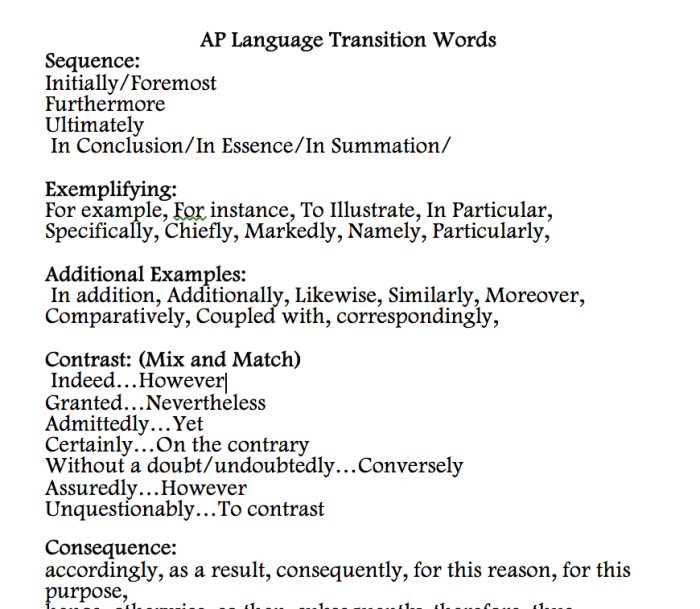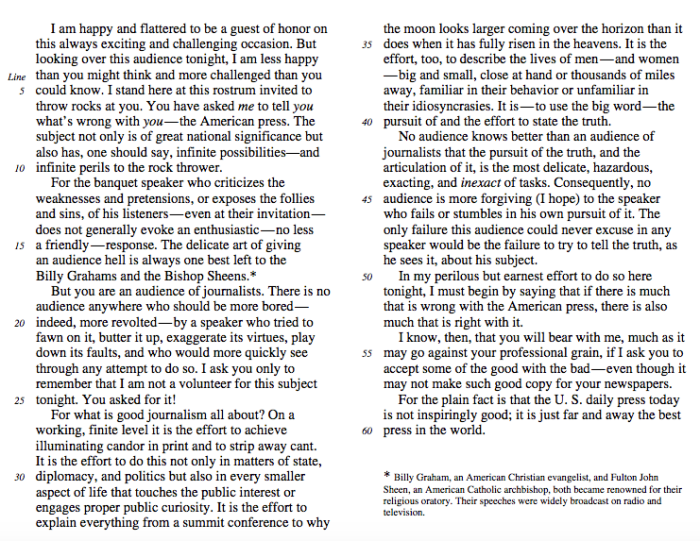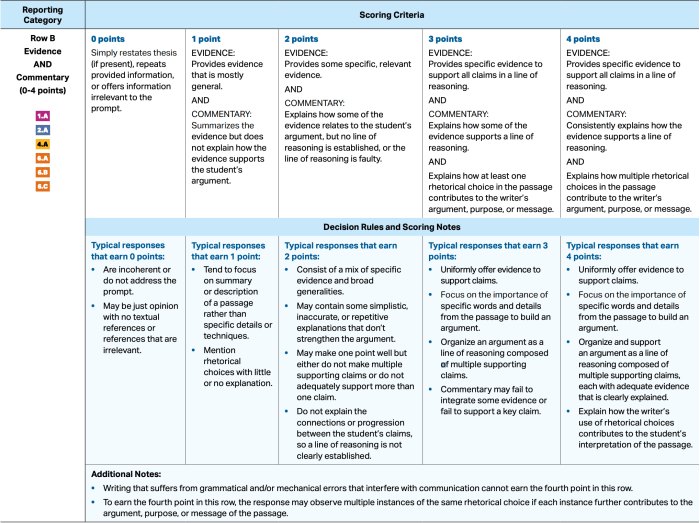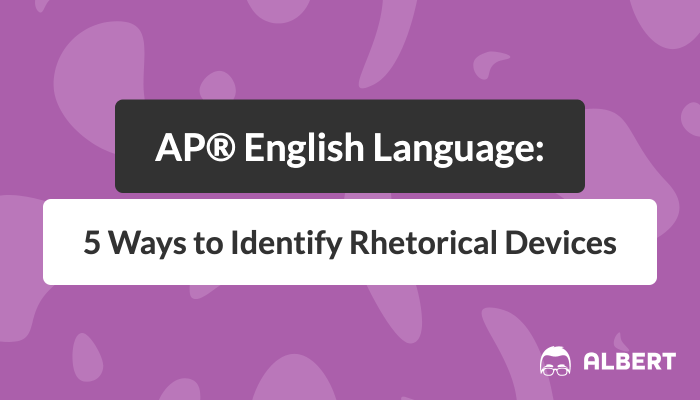Embark on a captivating journey into the realm of rhetorical devices for AP Lang, where words transform into powerful tools of persuasion and engagement. Prepare to uncover the secrets of effective communication and leave your audience spellbound.
From the subtle nuances of figures of speech to the persuasive power of logical fallacies, this comprehensive guide will equip you with an arsenal of rhetorical strategies that will elevate your writing and speeches to new heights.
Rhetorical Devices
Rhetorical devices are language techniques used to enhance the effectiveness and impact of communication. They help writers and speakers persuade, inform, and engage their audiences by adding emphasis, clarity, and vividness to their messages.
Commonly Used Rhetorical Devices
There are numerous rhetorical devices, each serving a specific purpose. Some of the most commonly used include:
- Metaphor:Compares two unlike things without using “like” or “as.” (e.g., “Life is a journey.”)
- Simile:Compares two unlike things using “like” or “as.” (e.g., “Her eyes sparkled like diamonds.”)
- Hyperbole:Exaggerates for emphasis. (e.g., “I’m so hungry I could eat a horse.”)
- Understatement:Downplays the importance of something. (e.g., “It was a bit chilly outside.”)
li> Personification:Gives human qualities to nonhuman things. (e.g., “The wind whispered through the trees.”)
Categories of Rhetorical Devices
Rhetorical devices can be classified into several categories based on their purpose and usage. Understanding these categories helps in identifying and analyzing the effectiveness of different rhetorical techniques in a text.
Figurative Language
Figurative language uses words and phrases to create vivid images and evoke emotions beyond their literal meaning. It includes devices like metaphors, similes, personification, and hyperbole, among others. By employing figurative language, writers and speakers can make their ideas more concrete, relatable, and impactful.
- Metaphor:A comparison between two things that are not literally alike but share a common characteristic, e.g., “Life is a roller coaster.”
- Simile:A comparison using “like” or “as,” e.g., “The child was as innocent as a lamb.”
- Personification:Giving human qualities to non-human things, e.g., “The wind whispered secrets through the trees.”
- Hyperbole:An exaggeration for emphasis, e.g., “I’m so hungry I could eat a horse.”
Structural Devices
Structural devices organize and present information in a logical and engaging way. They include techniques like repetition, parallelism, antithesis, and chiasmus. By using these devices, writers and speakers can create emphasis, contrast, and flow in their texts.
- Repetition:Using the same word or phrase multiple times for emphasis, e.g., “We will not be moved, we will not be defeated.”
- Parallelism:Expressing similar ideas using similar grammatical structures, e.g., “To err is human, to forgive divine.”
- Antithesis:Juxtaposing two contrasting ideas to create tension, e.g., “The best of times, the worst of times.”
- Chiasmus:Reversing the order of words or phrases in parallel clauses, e.g., “Ask not what your country can do for you, ask what you can do for your country.”
Sound Devices
Sound devices create musical effects and enhance the sensory experience of a text. They include techniques like alliteration, assonance, and consonance. By using these devices, writers and speakers can create rhythm, flow, and memorability in their texts.
- Alliteration:Repetition of initial consonant sounds, e.g., “Peter Piper picked a peck of pickled peppers.”
- Assonance:Repetition of vowel sounds within words, e.g., “The cat sat on the mat.”
- Consonance:Repetition of consonant sounds within words, e.g., “The rain in Spain falls mainly on the plain.”
Logical Devices
Logical devices use reasoning and argumentation to persuade and convince the audience. They include techniques like induction, deduction, and syllogism. By using these devices, writers and speakers can present evidence, establish relationships, and draw conclusions.
- Induction:Generalizing from specific examples, e.g., “I’ve seen three red cars today, so all cars must be red.”
- Deduction:Drawing a specific conclusion from general premises, e.g., “All men are mortal. Socrates is a man. Therefore, Socrates is mortal.”
- Syllogism:A three-part argument with a major premise, a minor premise, and a conclusion, e.g., “All birds have feathers. Eagles are birds. Therefore, eagles have feathers.”
Emotional Devices
Emotional devices appeal to the emotions of the audience to evoke a desired response. They include techniques like pathos, ethos, and logos. By using these devices, writers and speakers can connect with their audience on a personal level and influence their thoughts and actions.
- Pathos:Appealing to emotions, e.g., “Imagine the starving children in Africa.”
- Ethos:Establishing credibility and trustworthiness, e.g., “As a doctor, I recommend this medication.”
- Logos:Using logic and reason, e.g., “The evidence clearly shows that smoking causes cancer.”
Figures of Speech

Figures of speech are literary devices that use language in a non-literal way to create vivid imagery, enhance meaning, or evoke emotions. They are essential tools for rhetorical persuasion and can significantly impact the tone, style, and effectiveness of a message.
Figures of speech can be broadly categorized into two main types: tropes and schemes. Tropes involve the substitution, omission, or addition of words to create new meanings, while schemes focus on the arrangement and sound of words.
Metaphor, Rhetorical devices for ap lang
A metaphor is a figure of speech that directly compares two unlike things without using the words “like” or “as.” It creates a vivid and unexpected connection between two concepts, allowing the reader to see the familiar in a new light.
For example, in the sentence “Life is a journey,” life is compared to a journey. This metaphor suggests that life is a process of growth, exploration, and discovery.
Simile
A simile is a figure of speech that compares two unlike things using the words “like” or “as.” It creates a direct and explicit connection between two concepts, helping the reader visualize the comparison.
For example, in the sentence “Her eyes sparkled like diamonds,” the speaker compares the woman’s eyes to diamonds. This simile suggests that her eyes are bright, clear, and captivating.
Personification
Personification is a figure of speech that gives human qualities to non-human things or ideas. It allows the reader to connect with inanimate objects or abstract concepts on a more personal level.
For example, in the sentence “The wind whispered secrets to the trees,” the wind is given the human quality of speech. This personification creates a sense of intimacy and connection between the natural elements.
Sentence Structures

Sentence structure is a crucial element in rhetoric, influencing the effectiveness and impact of communication. By manipulating the arrangement and organization of words and phrases, writers can create distinct rhetorical effects and convey specific messages.
Parallel Structure
Parallel structure involves repeating a similar grammatical pattern in a series of phrases or clauses. This technique creates a sense of rhythm and balance, emphasizing the importance of each element and enhancing the overall impact of the statement.
Example: “We the People of the United States, in Order to form a more perfect Union, establish Justice, insure domestic Tranquility, provide for the common defence, promote the general Welfare, and secure the Blessings of Liberty to ourselves and our Posterity, do ordain and establish this Constitution for the United States of America.” (Preamble to the US Constitution)
Repetition
Repetition involves using the same word or phrase multiple times within a sentence or passage. This technique creates emphasis, drives home a point, and can evoke a range of emotions, from persuasion to inspiration.
Example: “I have a dream that one day this nation will rise up and live out the true meaning of its creed: ‘We hold these truths to be self-evident, that all men are created equal.'” (Martin Luther King Jr.’s “I Have a Dream” speech)
Antithesis
Antithesis involves contrasting two opposing ideas or phrases in close proximity. This technique creates tension, highlights differences, and can be used to emphasize a particular point or perspective.
Rhetorical devices are a handy tool for any AP Lang student looking to spice up their essays. But if you need a break from the complexities of language analysis, check out this life cycle of stars worksheet . It’s a fun and informative way to learn about the fascinating journey of celestial bodies.
And once you’re done, you can come back to rhetorical devices feeling refreshed and ready to tackle those essays with renewed vigor.
Example: “Ask not what your country can do for you—ask what you can do for your country.” (John F. Kennedy’s Inaugural Address)
Sound Devices
Sound devices play a crucial role in shaping the impact and effectiveness of rhetorical strategies. They engage the audience’s senses, creating a more immersive and memorable experience. Sound devices can evoke emotions, emphasize key points, and enhance the overall persuasiveness of an argument.
Alliteration
Alliteration is the repetition of initial consonant sounds in close succession. It creates a sense of rhythm and flow, making the language more memorable. For example, “The wind whispered through the willows” uses alliteration to emphasize the soft, rustling sound of the wind.
Assonance
Assonance is the repetition of vowel sounds within words that are close together. It creates a sense of harmony and unity, making the language more pleasing to the ear. For example, “The sun shone through the clouds” uses assonance to highlight the brightness and warmth of the sun.
Consonance
Consonance is the repetition of consonant sounds within words that are close together. It creates a sense of rhythm and emphasis, making the language more impactful. For example, “The thunder roared through the sky” uses consonance to emphasize the power and intensity of the thunder.
Logical Fallacies: Rhetorical Devices For Ap Lang

Logical fallacies are errors in reasoning that can lead to invalid conclusions. They are often used as rhetorical devices to persuade or manipulate an audience. It is important to be able to recognize logical fallacies so that you can avoid being misled by them.There
are many different types of logical fallacies, but some of the most common include:
-
-*Ad hominem
This fallacy attacks the person making the argument rather than the argument itself. For example, “You can’t trust what he says because he’s a liberal.”
-*Ad populum
This fallacy appeals to the emotions of the audience rather than their reason. For example, “Everyone is doing it, so it must be okay.”
-*Straw man
This fallacy misrepresents the opposing argument in order to make it easier to attack. For example, “You say that we should raise taxes on the rich, but what you really want is to steal from the wealthy.”
-*Begging the question
This fallacy assumes the truth of the conclusion in order to prove the conclusion. For example, “God exists because the Bible says so, and the Bible is true because it is the word of God.”
-*Circular reasoning
This fallacy uses the same argument to prove both sides of an issue. For example, “War is necessary because it brings peace.”
-*False dilemma
This fallacy presents only two options when there are actually more than two. For example, “Either you are with us or you are against us.”
-*Slippery slope
This fallacy argues that one small step will lead to a series of increasingly negative consequences. For example, “If we allow same-sex marriage, then next thing you know, people will be marrying their pets.”
It is important to be able to recognize logical fallacies so that you can avoid being misled by them. By understanding the reasoning behind these fallacies, you can be more critical of the arguments that you encounter and make more informed decisions.
Rhetorical Strategies

Rhetorical strategies are techniques used to persuade and argue effectively. They involve using language and logic to create a compelling case and influence an audience’s thoughts or actions.
Ethos, Pathos, and Logos
Aristotle identified three main rhetorical strategies:
- Ethos(credibility): Establishing the speaker’s trustworthiness and expertise.
- Pathos(emotion): Appealing to the audience’s emotions to evoke sympathy, fear, or other feelings.
- Logos(logic): Using reason and evidence to support arguments and persuade the audience intellectually.
Effective Rhetorical Strategies
Effective rhetorical strategies often combine ethos, pathos, and logos:
- Anecdotes: Personal stories or examples that illustrate a point and connect with the audience on an emotional level.
- Analogies: Comparing a complex or unfamiliar concept to something familiar to make it easier to understand.
- Appeals to authority: Citing credible sources or experts to support an argument.
- Rhetorical questions: Asking questions that prompt the audience to think and engage with the speaker’s argument.
- Call to action: Encouraging the audience to take a specific action or make a decision.
Quick FAQs
What are rhetorical devices?
Rhetorical devices are linguistic techniques used to enhance the effectiveness of communication, persuasion, and argumentation.
How can I use rhetorical devices in AP Lang?
By understanding the different categories and mechanisms of rhetorical devices, you can strategically employ them to strengthen your writing and speeches in AP Lang.
What are some common types of rhetorical devices?
Figures of speech (metaphor, simile, personification), sentence structures (parallelism, repetition), sound devices (alliteration, assonance), and logical fallacies (ad hominem, straw man) are just a few examples.